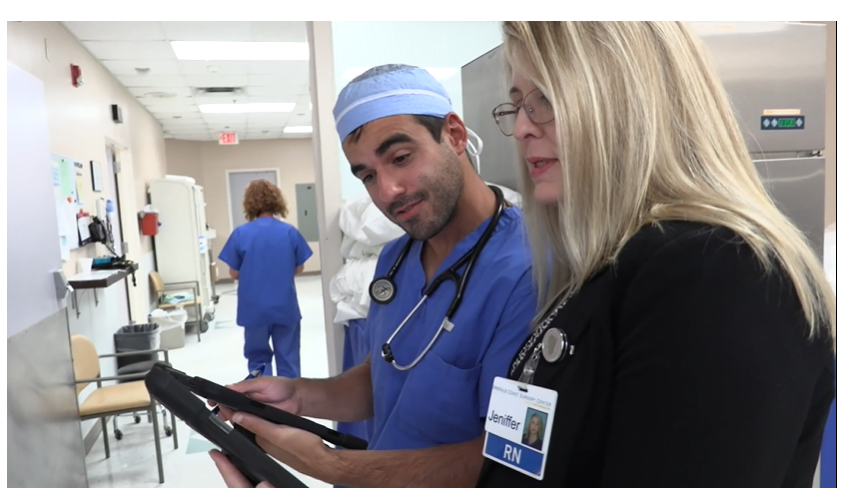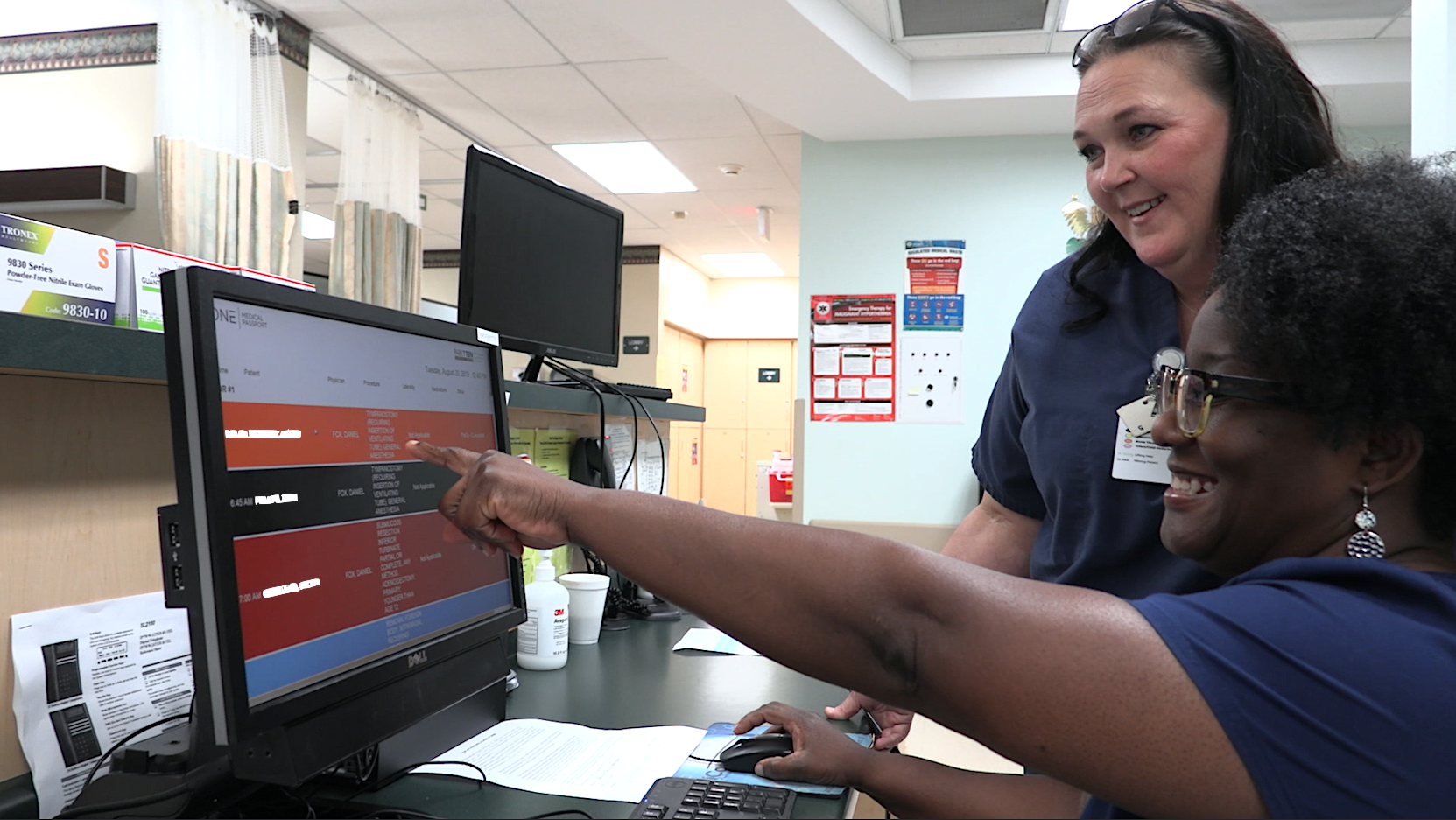Do you know how much paper charts are costing you? By some estimates, manual charting can consume up to $3-7 per chart. Based on national case volume averages, this can add up to $30,000 per year spent on recording patient data, assembling and disassembling case files, and retrieving charts. With these numbers in mind, the time is now to transition to digital patient charts.
Want to stay in the know on the latest ASC tips and topics?
Recent Posts
Looking for Something?
Categories
- ASC (82)
- ambulatory surgery center (82)
- video (36)
- nurse guide (29)
- patient communication (27)
- patient satisfaction (27)
- covid19 (26)
- surgical facility (25)
- business and finance (22)
- technology (22)
- patient engagement (19)
- ambulatory software (18)
- pre-admissions (16)
- Case Study (14)
- ambulatory surgery center software (11)
- outpatient surgery (11)
- culture of safety (10)
- complex cases (8)
- or volume (8)
- administrator (7)
- employee satisfaction (7)
- infection control (7)
- outpatient surgery software (7)
- risk management (7)
- solutions (7)
- cardiac (6)
- disinfect (6)
- patient tracking (6)
- postop (6)
- total joint (6)
- document management (5)
- implementation (5)
- patient survey (5)
- surgery scheduling (5)
- ASC Everyday Heroes (4)
- hiring (4)
- job security (4)
- payment plan (4)
- preop (4)
- scheduling (4)
- security (4)
- surgery center (4)
- women in healthcare (4)
- ASC booking (3)
- CMS (3)
- CMS requirements (3)
- Derek's Corner (3)
- best practices (3)
- data integration (3)
- everyday heroes (3)
- outpatient surgery center (3)
- patient registration (3)
- preop nurse (3)
- revenue (3)
- senior patients (3)
- specialty procedures (3)
- texting (3)
- vendor management (3)
- ASC quality reporting (2)
- Accreditation (2)
- GI (2)
- ambulatory surgery center surveys (2)
- burnout (2)
- cancellations (2)
- clinical (2)
- cost (2)
- digital chart storage (2)
- healthcare consumerism (2)
- hygiene (2)
- new hire (2)
- patient charts (2)
- patient risk (2)
- payments (2)
- screening (2)
- sleep study (2)
- time management (2)
- 2021 (1)
- 4 tips (1)
- Accredited (1)
- Billing (1)
- ERAS (1)
- One Mnet Health (1)
- SaaS (1)
- capnography (1)
- certfication (1)
- colonoscopy (1)
- conscious sedation (1)
- corona virus (1)
- customer spotlight (1)
- diagnosis (1)
- elderly patients (1)
- endo (1)
- intubation (1)
- laryngoscopy (1)
- marketing (1)
- obesity (1)
- online pre-admissions (1)
- outsourcing (1)
- patient (1)
- patient finance (1)
- patient satifaction (1)
- payment (1)
- personalized care (1)
- physician offices (1)
- pricing (1)
- recovery (1)
- sleep apnea (1)
- staff burden (1)
- staffing shortage (1)
- surgery center management software (1)
- top 12 (1)
- vendor communication (1)
- vendors (1)
What does it take to successfully manage an ASC? As with any administrative role, you must find the balance of being a leader and being a team player. Follow these 4 habits for success in your leadership role and in your ASC.
Quality reporting is a crucial strategy for improving your ASC's efficiency while ensuring patient safety. However, increasing OR volumes and CMS survey requirements mean that quality reporting can easily consume many extra hours. Here’s how you can improve without bankrupting your most precious resource—time.
Onboarding new technology is the beginning of easier processes within surgical facilities. The process of onboarding can appear daunting, but by debunking a few misconceptions and explaining the best way to navigate your staff through this process, we'll help you realize why it's not.
The Ambulatory Surgery Center industry is seeing unprecedented growth in 2020. According to the 2019 Ambulatory Surgery Center Market Report, the ASC market is expected to set an all-time record and surpass $40 billion in revenue in 2020 and is projected to hit $50 billion by 2025.
In 2018, nearly 22 million surgeries were performed in the United States with more than half being of the outpatient variety and experts predict this number to increase by roughly 15 percent by 2028. In recent years, more than half of outpatient procedures have been administered in ASCs. As healthcare costs continue to increase steadily, these statistics are expected to trend upwards in 2020 and beyond.
But why the unmistakable draw to ambulatory surgery centers in 2020? The reasons are many and certainly differ depending on each patient’s circumstances, but there are several key benefits that cement the role ASCs play in the healthcare industry.
As more and more patients seek out ambulatory surgery centers over hospital settings for outpatient procedures, ASCs are faced with the constant challenge of scheduling more and more appointments. And unfortunately, with higher traffic numbers, scheduling aspects can (and do) fall through the cracks. Investing in a quality ambulatory surgery center software program can help ASCs a great deal on this front. But before we get into fixing problems, it’s important to recognize how mistakes are made in the first place. Below are some of the most common issues ASCs face that lead to mistakes in scheduling.
More and more, hospital systems and private entities are exploring ventures into the ASC market. Here’s what you can do to successfully navigate and flourish under an ownership change.
As we previously discussed, accreditation guidelines are there to help your ASC improve quality, safety, and efficiency. However, staying on top of certifications can be time-consuming. Some specific digital solutions can help.
Accreditation guidelines aim to help your ASC run more efficiently. The Centers for Medicare and Medicaid Services (CMS) and the Accreditation Association of Ambulatory Health Care (AAAHC) are there to help you improve the quality of care and patient safety. But staying on top of these accreditations can be a lot of work. Fortunately, some specific strategies can help you streamline.











